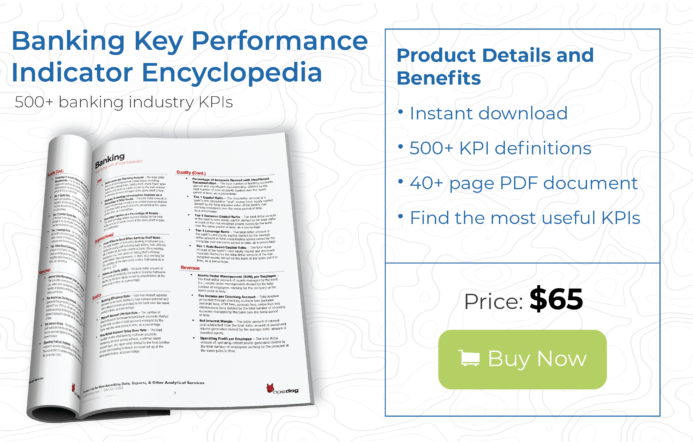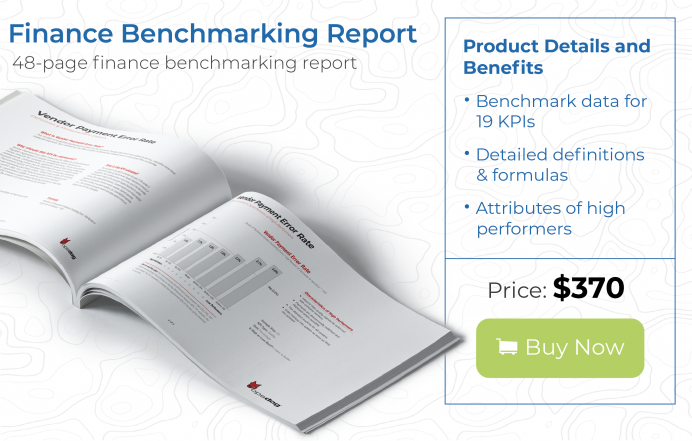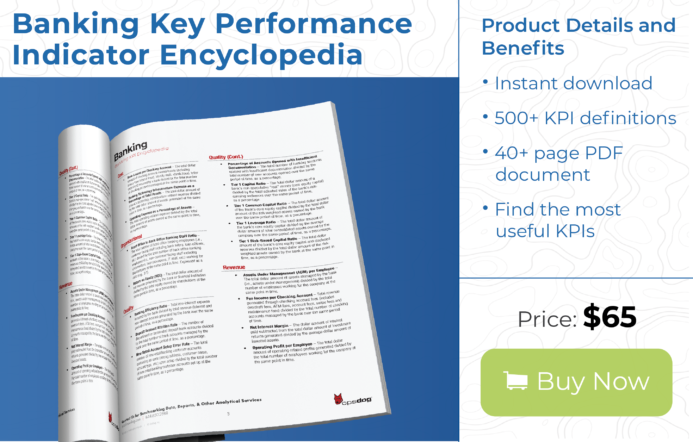What is Competitive Benchmarking in Business?
No, it’s not what a pigeon does to that nice place where you’d wanted to sit in the park. Competitive benchmarking in business is, in fact, a process of—here comes the numbing definition, we’ll translate it into plain English in a second, we promise—comparing the quality of an organization’s policies, products, operations, processes, etc., (e.g., a company’s productivity, staffing levels, financial performance, etc.) against those of other organizations in the same industry, or in the broader marketplace through the use of standardized metrics, or KPIs.
A Simple One Sentence Definition of Competitive Benchmarking: Benchmarking is the Process of Comparing Your Business to Others.
In this article, we’re going to explain the different types of competitive benchmarking in business, and tell you a cool, real-world story of competitive benchmarking in action. This, you undoubtedly guessed by now, is to lay the groundwork so that you can arm yourself with the ability to benchmark your company against others, and thus determine what and where improvements are called for.
What the Competitive Benchmarking Process in Business Answers
Using KPIs—yup, that’s Key Performance Indicators (and you can learn all about them in our KPIs 101 articles if you need to)—competitive benchmarking asks, and seeks to answer, three really good questions:
- How is my organization performing compared to similar organizations?
- Where should I focus my improvement efforts? (That is, which departments, processes, teams, or individuals need the most help, based on the data we’ve uncovered?)
- Who should I emulate for best practices? What companies, organizations, or individuals are setting the bar highest—and what are they doing that I’m not… yet could be?
Clearly, these are real-world concerns. Your business operates in a competitive field, and you can’t see how it stacks up against others in a vacuum. This is why competitive benchmarking is such an important and trusted way to improve.
It gets better. Competitive benchmarking can be performed at different levels within your organization. It can be company-wide, regional, departmental, process-based, and even focused right down to the individual-employee level. If you can assign a KPI to it, you can benchmark that KPI against those of your peers. Pretty powerful.
Types of Competitive Benchmarking and Why the Business Operations Comparison Process Matters
In true OpsDog fashion, we’re going to not only define each type of competitive benchmarking in business, and give you example metrics thereof, but we’ll also tell you, in plain English, why each type of benchmarking in business would matter to you. Because it’s not enough that you simply understand these concepts. It really starts to pay off when you make them work for you.
Below are 5 examples of competitive benchmarking used in business today:
- Industry or market benchmarking analysis. This type of competitive benchmarking seeks to assess the overall positioning of a company within a certain market or industry. It’s also known as “strategic benchmarking.”Competitive Benchmark Examples: Market Share, Market Penetration, Forecasted Growth Rate (Overall).
In English/Why your business would care: “How come we only own 10 percent of the market in Ohio? We’re based in Ohio!” - Financial benchmarking in business. This flavor of competitive benchmarking compares the fiscal performance and well-being of a company to that of similar organizations.Competitive Benchmark Examples: Total Revenue, Total Expense, Profit Margin, Earnings per Share (EPS), Quick Ratio, Dividend Payout Ratio, Market Cap.
In English/Why your business would care: “Look, we’re bringing in more revenue than our peers… but it’s offset by our higher expenses! Get me an antacid!” - Product benchmarking analysis. Seeks to compare the performance and/or quality of similar products or services offered by different organizations.Competitive Benchmark Examples: Product Unit Cost, Profit per Product Sold, Product Defect Rate, Forecasted Growth Rate (By Product), Number of Product Recalls, Net Promoter Score (NPS).
In English/Why your business would care: “That new QA program is paying off! Our products have the lowest defect rate in the industry! I know some people who are gonna get some nice holiday bonuses!” - Operational benchmarking in business. Compares the day-to-day internal business operations of a company to those of other similar organizations.Competitive Benchmark Examples: Vendor Invoice Error Rate, Cost per Hire, Mean Time to Repair, Average Handle Time (AHT).
In English/Why your business would care: “Most call centers in our industry are resolving these issues in half the time that we are! What are they doing that we’re not?” - Individual benchmarking analysis. This type of competitive benchmarking seeks to compare the performance of individual employees to that of other, similar employees, whether internal or external.Competitive Benchmark Examples: Sales Quota Attainment, Calls Handed, Number of New Customers Acquired, Lead-to-Close Rate.
In English/Why your business would care: “What the heck does Larry eat for lunch? His numbers blow away everyone else’s in the department!”
Competitive Benchmarking and How it is Connected to Other Internal Business Analysis
Just as your business doesn’t operate in a vacuum—hence the need for competitive benchmarking—the KPIs and benchmarking analysis which you employ shouldn’t be considered in isolation. They’re often downright symbiotic, and you can take advantage of this inherent interdependency by utilizing them in concert to supercharge business operations performance.
An example is in order:
- If Company A’s Call Center was able to reduce its Average Handle Time (AHT) for a single call…
- …it was then able to increase the number of calls that each employee could handle per day…
- …and this, in turn, led to reduced total expense, because fewer employees were required to handle incoming calls in the first place.
It’s got kind of a beautiful Aesop-like/house-that-Jack-built kind of flow to it, doesn’t it? And you thought data wasn’t pretty.
Put another way: It’s a way of seeing how business performance, like the late Ted Stevens’ infamous “series of tubes,” runs from the individual-employee-desk level all the way up to the macro-market level. And back again.
An Example of a Competitive Benchmarking Project at a Fortune 500 Business
This is a true story of competitive benchmarking. You’ll like it.
From about 1950 through 1975 (yes, a quarter century), Xerox dominated the printer market. Yet in the early 1980s (cue big hair, shoulder pads, and neon), Xerox faced stiff competition from Japanese competitors such as Ricoh and Canon.
Did we say “stiff”? How about “devastating”? These Japanese interlopers were able to sell their products at lower prices, eating into Xerox’s earnings. In fact—and here’s the killer benchmark for you—Xerox’s market share fell from 86 percent in 1974 to just 17 percent in 1984.
Ouch.
Enter new Xerox CEO David Kearns. In 1982, he sought to understand the underlying reasons of Xerox’s shrinking market presence. (Stiff competition? Shrinking presence? Oh, get your mind out of the gutter.)
Kearns began by launching a competitive benchmarking project for Xerox’s operations against those of its Japanese counterparts. Here’s what he found: Xerox’s benchmarked cost to manufacture a single unit was roughly 50 percent higher than those of its competitors. Fifty percent higher!
Know what Kearns did? He fired a ton of people, and then promptly had a heart attack and died.
No, not really. He actually launched an internal program, dubbed “Leadership Through Quality,” to define and address the underlying drivers of this crippling competitive cost benchmark disparity. It looked at manifold issues across Xerox’s product development, procurement, and manufacturing operations. Specifically, its high-level goals included:
- Reducing overall time required to bring new products to market (i.e., the ever-popular Cycle Time: Time to Market KPI vs. competitors).
- Improving engineering capacity (i.e., reducing number of engineers required to develop products).
- Minimizing design changes and overall design costs.
- Decreasing manufacturing waste and cycle times (i.e., Takt Time).
- Simplifying product assembly via techniques such as interchangeable parts (see: “Whitney, Eli”).
- Improving supplier performance.
Clearly, Kearns could never have accomplished any of this if he had suffered the aforementioned heart attack. And with the implementation of specific improvements to address its newly-discovered shortcomings its competitive benchmarks, Xerox was able to regain market share and curb the rise of its Japanese challengers.
That story is about an apples-to-apples, or more appropriately, printer-manufacturers-to-printer-manufacturers competitive benchmarking comparison. But in subsequent years, Xerox expanded its competitive benchmarking program, leveraging metrics and comparisons from wholly different industries—such as auto manufacturers and financial-services companies—to assess and improve various parts of its operations.
You’ve Completed the OpsDog Crash Course 1 of 4 in Competitive Benchmarking
We knew you’d breeze through this article. Ready for another? In our next one, we’ll uncover what competitive benchmarking projects actually do and various benchmarking best practices you can follow.
Or, before you dive into that article, why not dive into our rich trove of ready-made benchmarking reports, available for immediate download? (We also offer custom benchmarking services if you really want to drill deep.)
Article Series: A Guide to Benchmarking
Measure, Compare, Improve
- 1. What is Competitive Benchmarking in Business
- 2. What Competitive Benchmarking Projects Do and Examples of Benchmarking Analysis Best Practices
- 3. Benchmarking Analysis Project: How to Scope the Project, Define Benchmarks, Compile Benchmark Data and Present Analysis
- 4. The Benefits of Benchmarking Analysis and How a Competitive Benchmarking Project Can Improve Your Business


